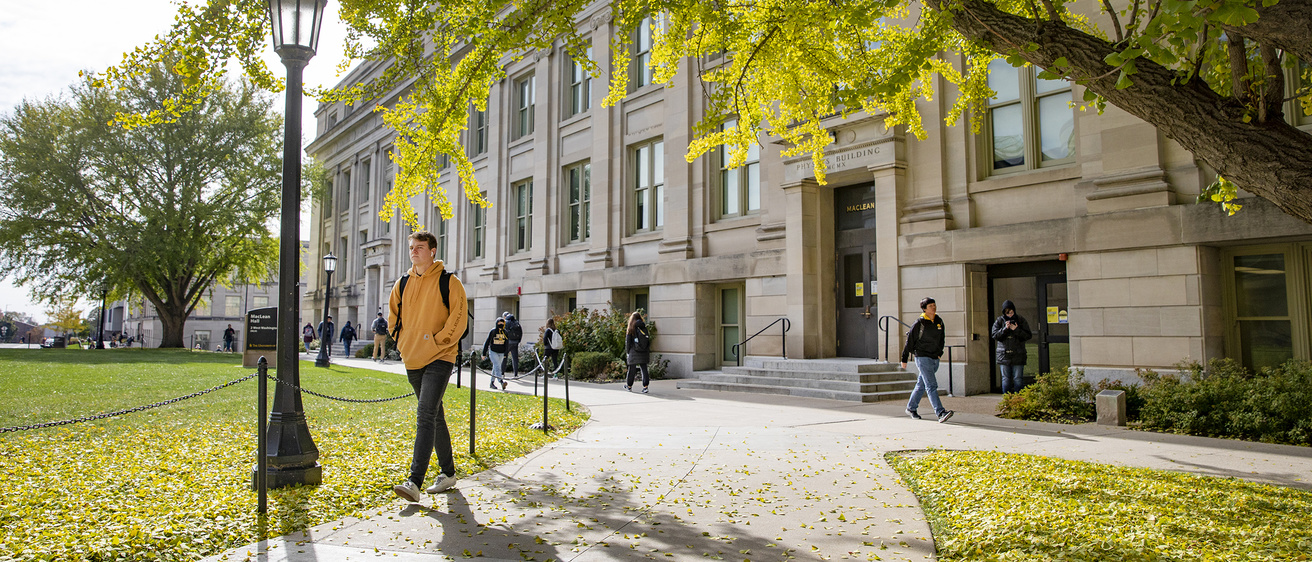Main navigation
Subject at Iowa
Empowering mathematical minds for innovative solutions and research
The University of Iowa Department of Mathematics is dedicated to research, graduate and undergraduate education, and supporting education of students in engineering, science, and the liberal arts.
The department is extremely proud of our students and faculty. We have 30 faculty members whose research interests include a variety of specialized areas, including algebra, analysis, differential geometry, and more.
Our main office is in Room 14 on the Ground Floor of MacLean Hall on the southwest corner of the beautiful Pentacrest, the heart of the University of Iowa campus. An accessible entrance and elevator is located on the northeast corner of the building, closest to the Old Capitol.
The main office is open Monday-Friday from 8:30 a.m. to noon and 1 p.m. to 4:30 p.m. You can reach us by calling 319-335-0714 or e-mailing mathematics-department@uiowa.edu.
Why Iowa?
Discover a vibrant academic community fostering mathematical excellence and innovation
At Iowa, you'll find a supportive community dedicated to your success, with unparalleled opportunities for hands-on research and personalized mentorship. Our undergraduate and graduate programs offer rigorous academic training in mathematics, preparing students for diverse career paths in academia, research, and more. With award-winning faculty and a commitment to scholarly excellence, the Department of Mathematics provides an intellectually stimulating environment where students can thrive and make meaningful contributions to the field.
The Iowa experience
Iowa's Department of Mathematics has 30 faculty members with diverse research interests.
Our research
We are committed to advancing mathematical knowledge through innovative research and exceptional education. Our rich history of scholarly excellence shapes our mission to inspire and empower future generations of mathematicians.
